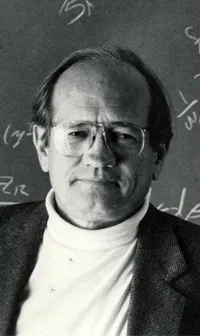Lens Design: A Higher Power

According to Bob Shannon, the successful teaching of optical design requires certain principles. Two of these are: “Lens design is a practical engineering activity that must be related to real-world problems and the most successful optical designers are those who have the breadth of knowledge necessary to be adaptable to new technology and unusual design problems.” As a professor, Bob had a wealth of prior industry experience to pull from when formulating these real-world problems and, after chatting with Janet Fender, a 1981 Ph.D. graduate, it has become clear to me that he also had a sense of humor.

A student’s final grade in Professor Shannon’s optical engineering class was based solely on two exams, the midterm and the final, each counting for 50 percent of the grade. It was during the midterm exam that the students gained insight into exercising one’s own ingenuity and dealing with workplace dynamics. And given that in the late 1970s punch cards were not yet a thing of the past and students were issued a computer account each semester with a limited amount of usage time to emulate “billable hours,” they also learned an invaluable and memorable lesson in system engineering and cost-performance optimization.
Janet still vividly recalls the day of the midterm. She remembers Professor Shannon writing one lens design problem on the blackboard: Design a triplet meeting “seemingly reasonable” performance parameters. Then came the kicker. “You have 24 hours to complete this task, and I am leaving for Colorado today so I will not be around for questions.” Remember, this was before the days of firing off an email asking for clarification or additional information. But being a caring professor, Bob had left the students with a phone number for absolute emergencies.
So with only two computer terminals available, the students lined up in the closet-sized computer room, clutching boxes of carefully arranged decks of punch cards, as the quest for a solution began. It wasn’t until somewhere around midnight that they realized the harsh truth: “Our fatherly Professor Shannon had given us an insoluble problem.” Tears were shed by students whose entire computer accounts had been expended reaching that conclusion.
But there was still hope. Remembering Professor Shannon’s last offer of an emergency lifeline, they pooled together money for a long-distance call on the pay phone. One brave student dialed the number and anxiously waited with the entire class breathing down his neck. One ring, two rings, three rings. “Hello, thank you for calling Dial-A-Prayer…”
Lesson learned. The best optical engineers need the ability to quickly recognize a customer’s unrealistic requests and satisfactorily adjust expectations. Well, perhaps, that wasn’t the only lesson learned.
Fast forward a few years. Janet is working as an optical research physicist at Kirtland Air Force Base in New Mexico. She remembers her first vacation after graduation. She and her husband had just landed in Barbados after an all-night flight by way of Los Angeles and San Juan. Jet-lagged and with visions of fruity drinks with little umbrellas in them, they quickly prepared to head for the beach. But not fast enough to avoid a call to the hotel from Janet’s boss. Fruity drinks delayed two hours.
After that incident, let’s just say that by the end of Janet’s second vacation, her boss had experienced firsthand the power of Dial-a-Prayer! (Thanks to a well-thought-out emergency number left on the sign-out board.)
